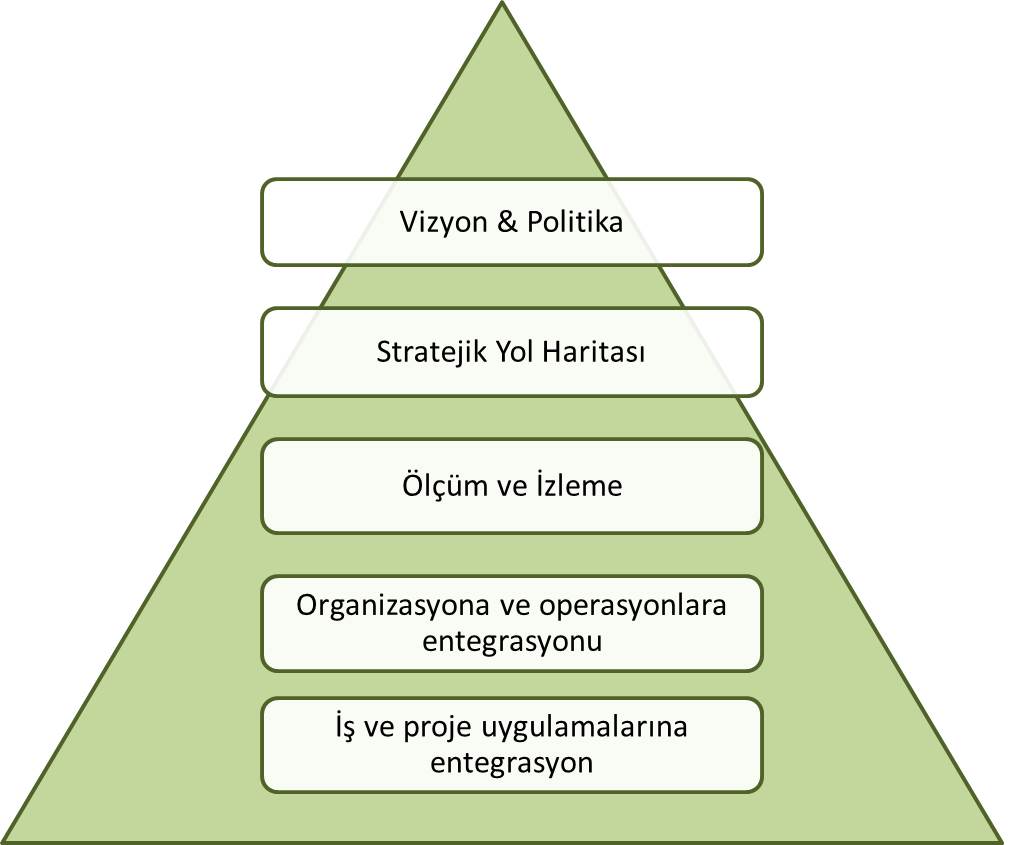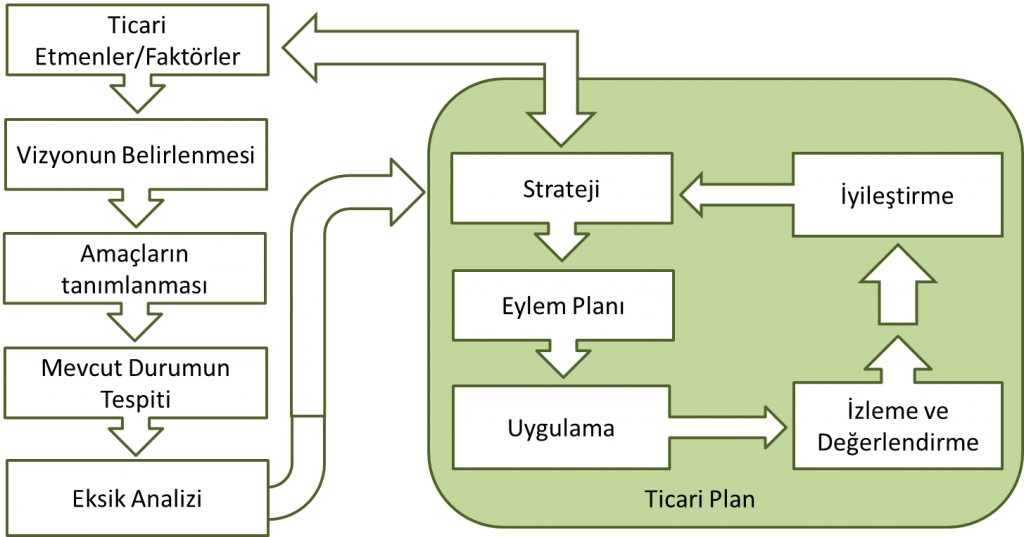Sustainability Strategy
Strategic Sustainability
From organizations’ point of view, sustainability can be defined as the adaptation capacity to the change in global, macro-economic, environmental, public trends which are originated by sustainability and the related legal arrangements. In order to be able to obtain a secure sustainability implementation, economic, social and environmental parameters, as being the Fundamentals of sustainability, should be a part of all strategic and operational processes and decision making mechanisms within an organization.
At this point, it is important to recognize that organizations’ role in the society has not only an economic dimension, but also social and environmental dimensions. It is generally foreseen that organizations can only continue their operations in a profitable and sustainable way through taking all of these three dimensions into account.
At present, enterprises are interested in sustainability due to legal arrangements and obligations and at the same time sustainability is recognized as a competition parameter. Companies, which are active in sustainability at present, demonstrate that they can adopt an entrepreneur approach in the future.
Sustainability Strategy
Sustainability strategy of organizations whether can be prepared separately from the general corporate strategy or can also be integrated into the general corporate strategy. For both cases it is important that internal and external basic improvement and expectations related to sustainability should be evaluated as important data source in developing the company strategy. For example, if a decrease is expected by the raw material resources due to climate change, the enterprise should be able to make changes in the purchasing strategy so that these raw material can be purchased from different suppliers. Another example to this issue could be restriction of sales of some products or increased costs due to changes in legal requirements. In this case, enterprises should be able to adjust their investments and they should be able to make different investments in order to prevent the possible negative effects of these legal requirements.
It is important that the sustainability strategies of enterprises are in line with their mission and vision. However, internal company policies mainly focus on legal obligations which lead to ignorance of environmental issues.
Every person / organization, who is affecting or affected by the activities of an organization, is defined as stakeholder. The stakeholders of an organization can be classified as internal stakeholders, external stakeholder, and value chain. Internal stakeholders are employees and shareholders, whereas external stakeholders are investors, public, local authorities. Suppliers and customers belong to the value chain of an organization.
All the stakeholders of an organization should act together for generation of solutions to problematic issues. Besides the financial power of an organization, the responsible working approach can also reduce the risks through correct evaluation of demands and responses / feedbacks. In today’s business world, working hand in hand and looking for solution alternatives with stakeholders is a sign of good management approach.
It is a fact that local authorities and governing organizations have a significant impact on enterprises and the most affected stakeholders of enterprises are employees and stakeholders. The most important issue is that the mutual communication and interaction among the stakeholders is provided. Additionally, there are some points which needs to be improved in future. Employees should be able to contribute to the internal decision making mechanisms and enterprises should be able to contribute to decision making mechanisms of local governments and legislative regulators.
Enterprises should restructure their operational and organizational processes in order to initiate to implement their sustainability strategies for a long term. Enterprises, which adopted sustainability as their business practice method, are very successful in its implementation. Since they have restructured their operational and organizational processes around sustainability, these kind of enterprises can progress more easily compared to other companies regarding issues like communication, recognition, and implementation of sustainability strategies.
Data collection, measurement and assessment are important stages in continuing implementation of sustainability issues and achieving future improvements. At the first, enterprises should evaluate their current situation regarding sustainability. As latter, they should define future targets and make measurements in order to observe the enhancements and improvements. These enhancements and improvements should be reported in definite time periods. This will also increase the awareness level about sustainability internally and will lead to appropriation of sustainability strategies by internal stakeholders due to the communication of these improvements as a result of the actions taken by the management board.
The most commonly reported parameters are worker and employee trainings, waste and resource management. On the other hand, human rights and discrimination are parameters which has not ever been reported, yet. Enterprises mainly use these parameters in evaluation of new investments, comparison with competitors, development of new policies and setting indicator targets. Regarding economic and social issues, short term targets are monitored and targets set for environmental parameters still seem to be weak.
The stages regarding preparation of sustainability strategies can be summarized as follows:
- Definition of commercial factors in the market
- Designation of the vision
- Determination of the goal
- Analysis of the current state
- Gap Analysis
Commercial business plan / business model
- Generation of strategy
- Preparation of action plan
- Implementation of the action plan
- Monitoring and assessment
- Improvement / revision

